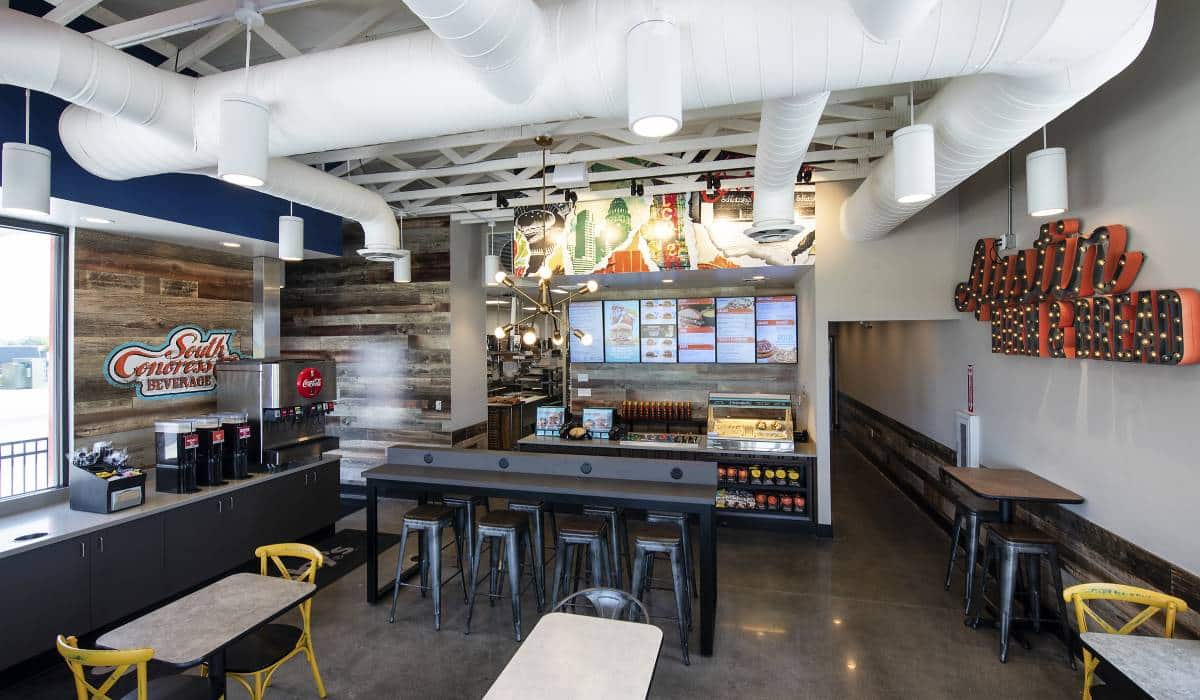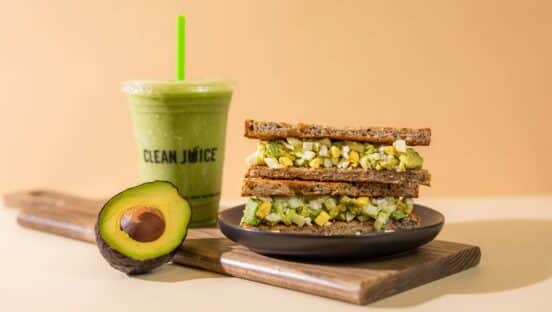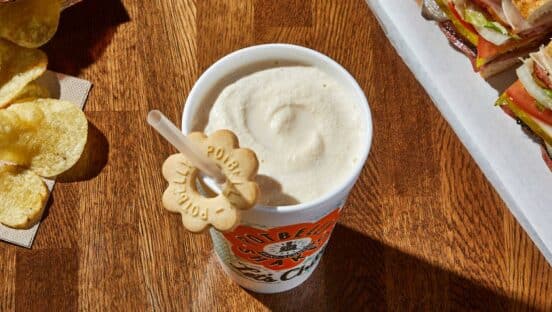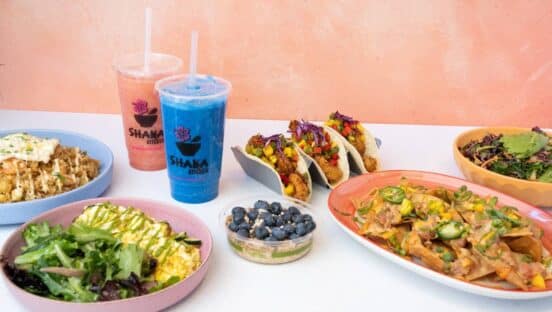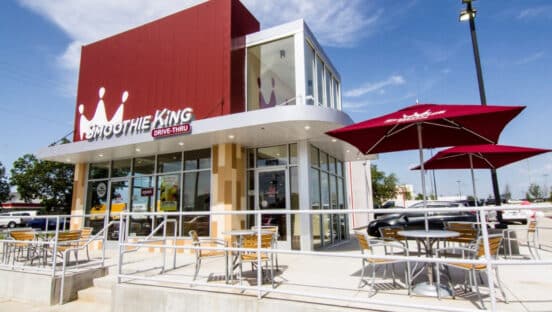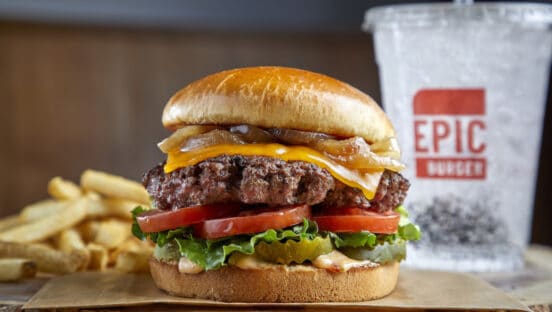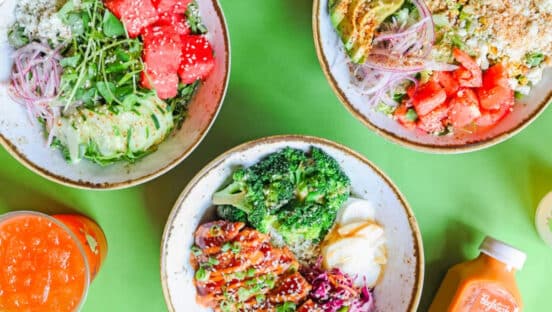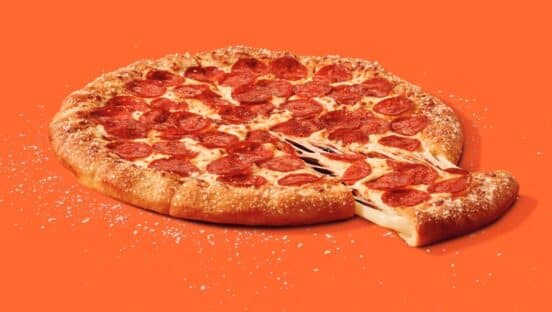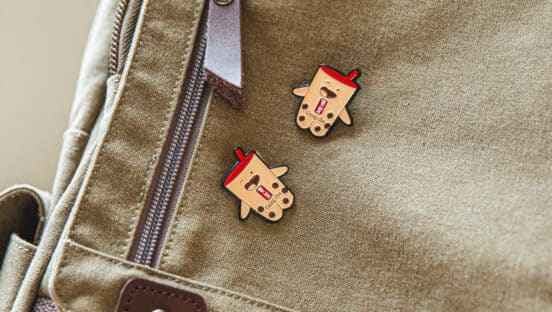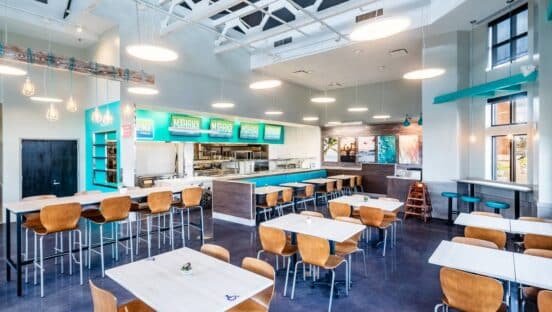COVID-19 changed many things, but not the whitespace of Focus Brands’ restaurant lineup, says category president Joe Guith.
The journey has always centered on transforming McAlister’s, Moe’s, and Schlotzsky’s from “really super regional” to national status. The pandemic didn’t impact that strategy—if anything, it amplified the path.
“What I will tell you is we have brands in different places, but we’re quickly leveling them up,” Guith says. “I think that’s one of the greatest appeals of our portfolio is the horizontal growth opportunity.”
Moe’s finished 2021 with 659 restaurants, a net loss of 60 restaurants compared to the end of 2018. That includes a net decrease of 41 stores in the pandemic-ridden 2020. Schlotzsky’s had 324 restaurants to close last year, down from 371 at the conclusion of 2018. But that’s not to say expansion plans have halted. In 2021, Schlotzsky’s unveiled two prototypes—drive-thru only and a slimmer traditional model—while Moe’s is moving forward with a new leadership team consisting of chief brand officer Tory Bartlett, vice president of marketing Annica Conrad, and vice president of operations Mike Smith.
McAlister’s, however, is a different animal. The fast casual completed 2021 with 505 stores, or net growth of 61 units versus three years ago, including plus 12 during the harsh 2020.
Although the brands are in different places in terms of performance and profitability, all three share a common appeal with middle America. Guith says Focus restaurants aren’t taking the high ground on culinary positioning, but the concepts still have “damn good sandwiches, burritos, and pizzas” that are more approachable than some of the larger competitors. There’s room to grow in these sections of the country, which is why Focus isn’t rushing into heavy urban areas known for increasingly competitive real estate and labor and higher costs.
READ MORE: Focus Brands’ New Digital Strategy Could Be a Game-Changer
For McAlister’s, it’s a matter of “how fast can we go,” Guith says. The pipeline today is enough to open about once a week for the next five years. There’s an opportunity to go faster, but the Focus executive insists that he’s not rushing to Los Angeles or New York. He believes concentric growth—out of the Mid-Atlantic and Midwest—is the better method, especially from an operations and supply chain standpoint.
The fast casual revealed last year that it’s on pace to reach $1 billion in annual sales by 2024, an unprecedented benchmark for Focus.
“We are great in the middle of the country, and in fact, in certain trade areas that some brands would never even think of going,” Guith says. “I mean I go to some places and I look around like where are all the people and yet we’re just doing AUV and above and it’s fantastic. We will get [to the coasts], but we have more than enough to get to one billion, one billion and a half and over in those areas. So why make huge leaps until you really are solid?”
Last year, all seven of Focus’ chains—inclusive of specialty concepts Jamba, Cinnabon, Auntie Anne’s, and Carvel—sold a record 561 franchises and opened more than 175 stores in the U.S. and Canada. In October, McAlister’s said it had a pipeline of more than 300, including The Saxton Group signing a 32-unit deal and Sun Holdings agreeing to open 51 locations in the next six years. By September 2021, Schlotzsky’s signed more than 75 franchise deals in the Midwest, Southeast, and Southwest markets.
Franchise growth skews internally, which Guith says is a testament to Focus’ strength as a franchisor. But he also knows that if restaurants want to grow at their desired rate, new blood will need to come in, and the executive expects that to happen as unit level economics improve. He also believes Focus suffers somewhat from a lack of recognition. He notes McAlister’s has less than 60 percent brand awareness in its markets.
“We need to change that, and we will,” Guith says.
[image source_ID=”127743″]
Each restaurant brand will expand with the future in mind, and Schlotzsky’s is seeing the most dramatic difference. The sandwich chain released Design 1000, a 1,000-square-foot double drive-thru unit with no dining room, and Design 1800, an 1,800-square-foot prototype with one drive-thru lane and 35 indoor seats. After growing with a legacy box that’s 3,000-plus square feet, the brand believes a majority of new stores will feature one of the two newer designs.
The first Design 1800 restaurant opened in August while Design 1000 came online in April.
McAlister’s slimmed its prototype from more than 4,000 square feet to as low as 2,700 square feet, and Moe’s is looking at a 1,600-square-foot model.
“With smaller dining rooms, we haven’t seen an issue with the shift,” Guith says. “For Schlotzsky’s, we’ve had drive-thrus for a long time. It’s just continuing to get better and better at drive-thrus. … I think the challenge is going to be that everybody wants that real estate now. It plays to our advantage because I think we can go places and appeal to people that other brands, even some of the bigger brands, can’t.”
Restaurants are altering their box size with an important goal in mind—reaching a 50 percent digital and loyalty mix within the next five years. When Guith became president of McAlister’s in April 2018, loyalty was one of its biggest issues, and in the board room, it was said that “you’re an on-premise concept in an off-premise world.” The executive took that to heart, realizing the classic brand can honor its heritage and extend digital accessibility at the same time. After updating its loyalty program from “surprise and delight” to a point-based tier system, participation skyrocketed, and Guith says that’s because customers were waiting for it.
“I think that experience is what’s the core and that heavy user will continue to drive the majority of it,” he says. “But extending the accessibility is what digital does.”
For Auntie Anne’s, Jamba, Cinnabon, and Carvel, much expansion comes via co-branding opportunities, such as 12 new Auntie Anne’s and Jamba drive-thru locations in the next year. Before leading Focus’ restaurant category and serving as McAlister’s president, Guith oversaw Cinnabon, so he’s familiar with how crucial the strategy is. The industry veteran estimates 50 percent of his job was recruiting Auntie Anne’s franchisees.
It works, he says, because of the simplicity—that isn’t necessarily the case for restaurants. When Guith worked at Yum! Brands, he saw the unwinding of those combined concepts. KFC and Taco Bell worked together in a few rural areas, but overall, it became too confusing. He believes there’s more of an opportunity for colocation, meaning brands share a dining room and bathroom, but keep operations separate. Like McAlister’s sitting beside Jamba in one market and near Moe’s in another. Through this, Focus is finding synergy with real estate, labor, and marketing.
Guith says it’s an example of franchisees leveraging “the power of the portfolio,” a rallying cry Focus will continue to hammer as its footprint builds across the country.
“I think we’ve done a nice job coming through the pandemic better than most,” Guith says. “We’ve got some good positive momentum.”

